
Yesterday, the first day of the 2013 Zagora fieldwork season, after the morning induction of the newbies, I decided to work at excavation area 5. My Powerhouse Museum colleague, Paul Donnelly, is the supervisor of that trench area, which is covered with rocks large and small. Lots and lots of rocks. And they’re almost all grey marble – which is about as heavy as rocks get. Paul decided this called for a chain gang approach, to pass the rocks down the slope and to create a spoil heap with the rocks removed from the trench area.
As each of his team members for this first day (the trench teams are not yet confirmed) brought out their gloves, I was amazed to find the high design element in most of the gloves. There were pink gloves, turquoise gloves, lime and blue. This screamed out ‘photo opportunity’. (Secretly, I’ll be watching out to see how their stylish gloves fare through the season compared with my drab but very sturdy grey workman’s gloves which I used last year and still have plenty of life in them yet.) Click the image at right for a closer view.
The first phase of work in this Zagora archaeological fieldwork season requires a lot of hard yakka (that’s Australian slang for ‘hard work’), including trench clearing and backfill and vegetation removal. That’s what most of the team was doing in the five excavation areas yesterday, the first day of the 2013 season.
The Zagora team leaders provide all the tools for excavation work except for a few personal items which we provide for ourselves: archaeological trowels, work gloves, anti-dust goggles and any extras some of us use, such as knee pads.
Following is a photo essay showing Paul’s team hard at it moving those rocks off the trench area.
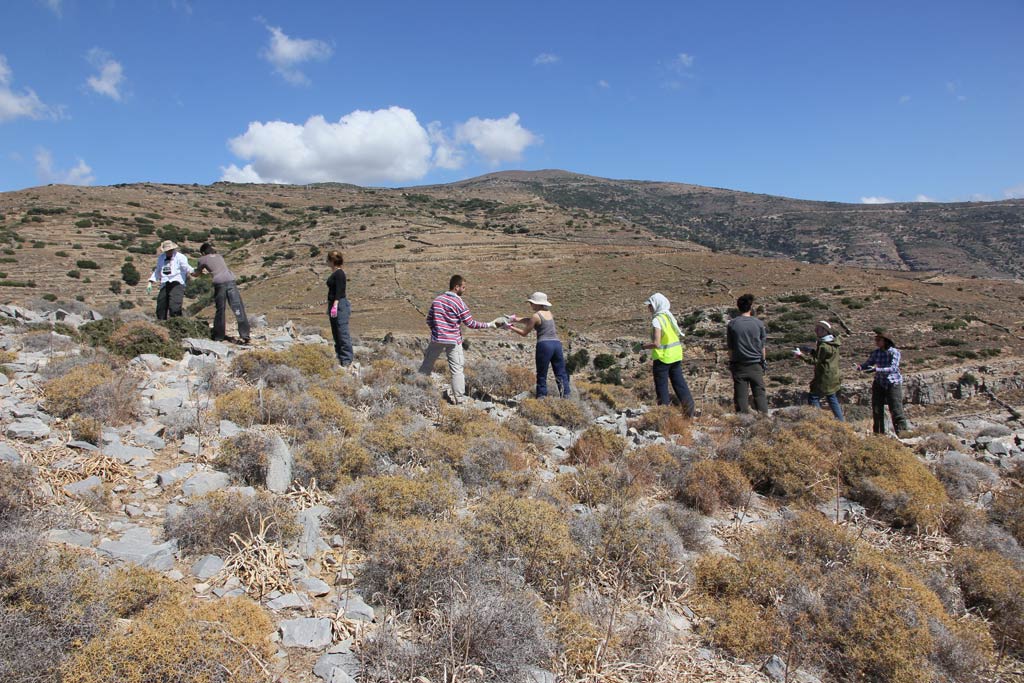

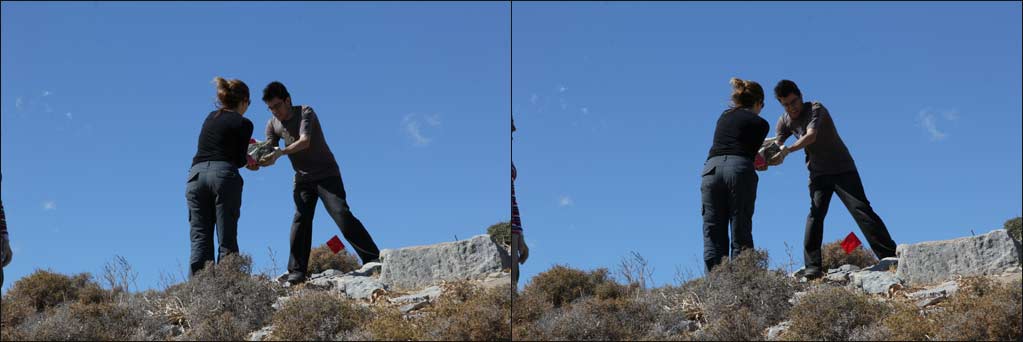

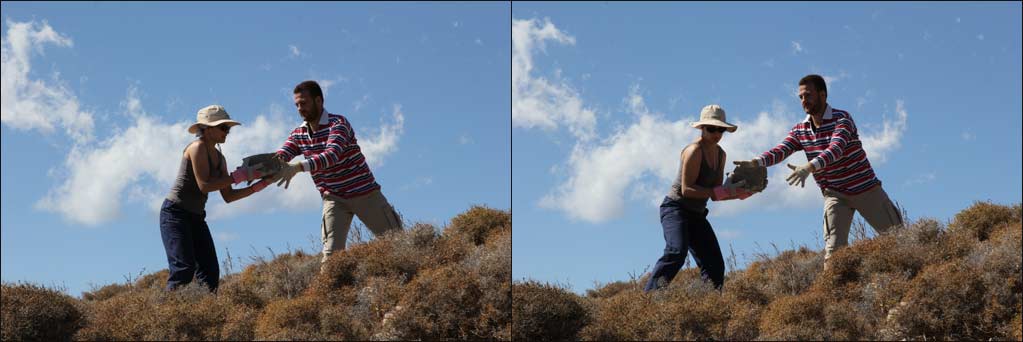
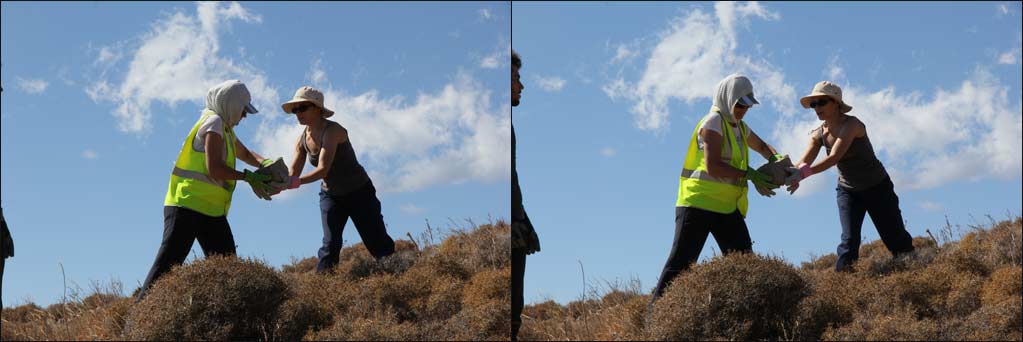
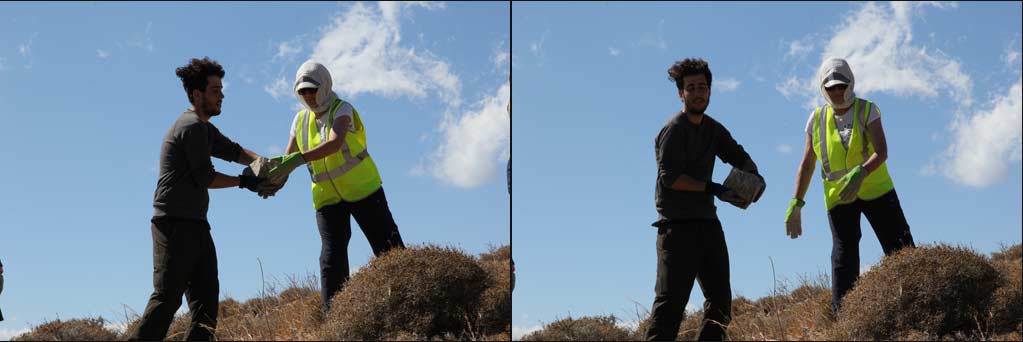
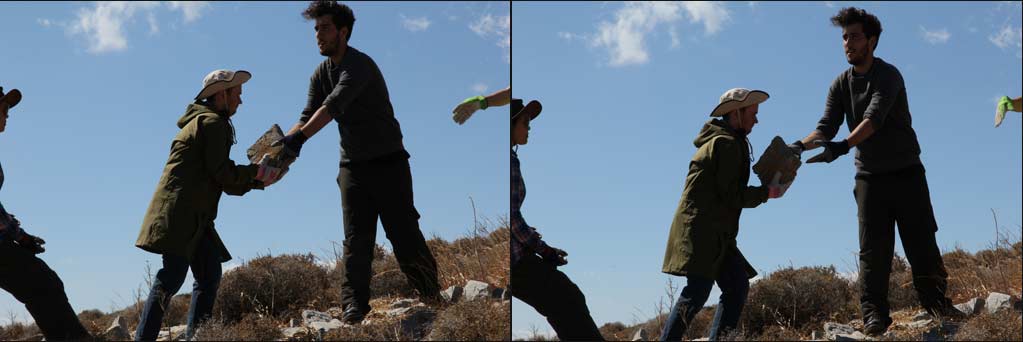


The rocks removed from the trench excavation area are placed in what is called a spoil heap, at some distance from the trench. This is what Elaine Lin is doing in the photo at right. This soil heap is on bedrock so there is no possibility that the rocks are covering up anything of archaeological significance underneath.
With all the details that had to be taken into consideration when arranging the logistics of the 2013 Zagora archaeological fieldwork season, who’d have imagined that the team leaders would have gone to the trouble of grouping together a team with such stylish gloves to match our debonair Paul.
All photos by Irma Havlicek; © Powerhouse Museum


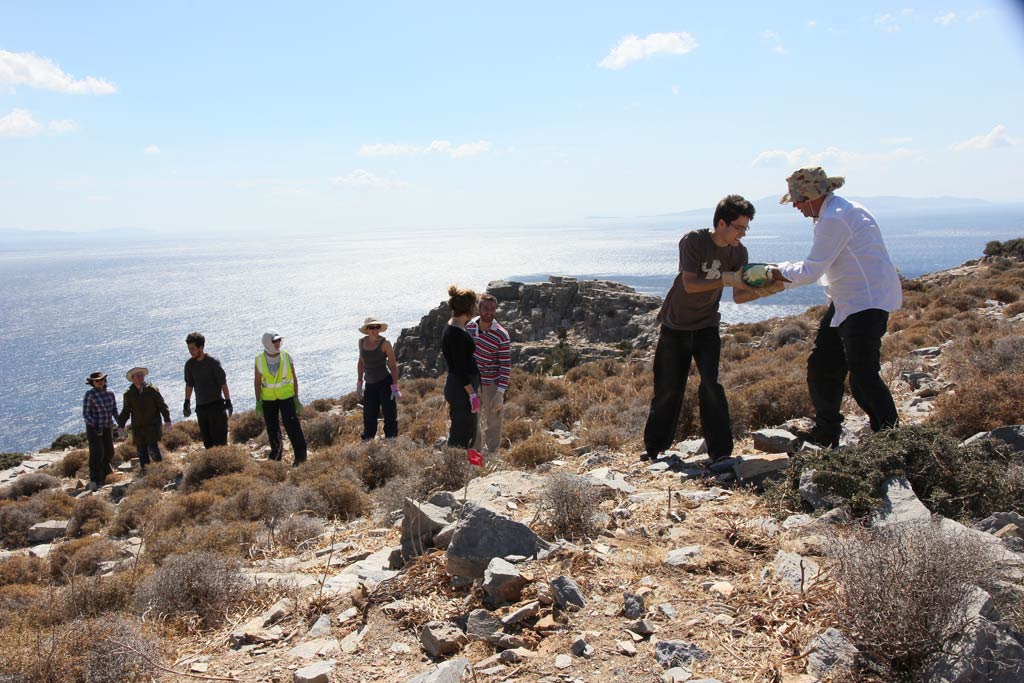


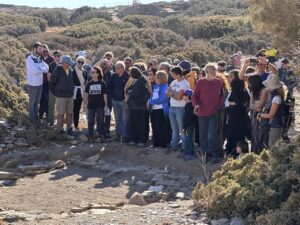
6 thoughts on “Working in a chain gang – moving rocks in designer gloves”
You have the best job here Irma – or were you put on the chain gang after these photos?
Thanks, Lynne – I was actually on the chain gang before I took the photos. That was Monday – really high wind. Today (Wednesday) it’s felt like about 35 degrees celsius, little or no wind, and almost no shade. Really hot. That walk up the hill was a doozie. We’ve just got back to our hotel (about 4pm; having set off from the hotel for the site at 6.20am). The good news is I can hear the waves of the Aegean just across the road, and in about five minutes I’m going to be in there.
HI there, very interesting stuff.I hear that you guys are digging in ground that may be good for a GPR system. If so GSSI make some great gear like UtilityScan DF and Profiler which have ArcheoSurveyor software for data interpretation.We have used this in Sydney and Auckland and ChristChurch to great effect.It is always nice to see the needles in a haystack I think.Of course MIL SPEC gear wouldbe a great way to go but they keep that stuff far away from people who could use it best.I have heard of the US Mil having a system that can image resolve a 5c coin at 5 metres or a coffee cup.That could be handy indeed for finding middens etc.Love the stories and pics.You are lucky not to be stuck in an office like some !
Thanks for your comment. You’re right about the value of ground penetrating radar (GPR). You can read here – http://www.powerhousemuseum.com/zagora/2012/10/29/lets-get-geophysical/ – about the GPR and other geophysical analysis we conducted on the site last year.
Hi Paul and Irma,
I hope that the beautiful location is some compensation for all that hard work!
Hi Kathy
Greetings from sunny (and windy) Andros. Yes, the beautiful location certainly is compensation for the hard work. But, even though it can be gruelling work, the work itself too is compensation for two main reasons. One is that it is so satisfying to be part of such a cooperative team – all members having the same goals at heart, and each and every person putting in 100% effort to progress as far as possible each day. And the second reason is that we all know that the effort will help to reach the shared goal of understanding Zagora better. What were domestic arrangements? Was there industry and, if so, what and where? There will be posts coming up with more about what we are hoping to find. Hope all’s well in Sydney.